Smaller homes – people figured – are less expensive than larger ones to build, require less heating, maintenance, and repair costs. In addition, they encourage a minimal lifestyle with a more pragmatic approach to life. Captivated by design, frugal living, or the scope of the social movement, one by one, millions joined.
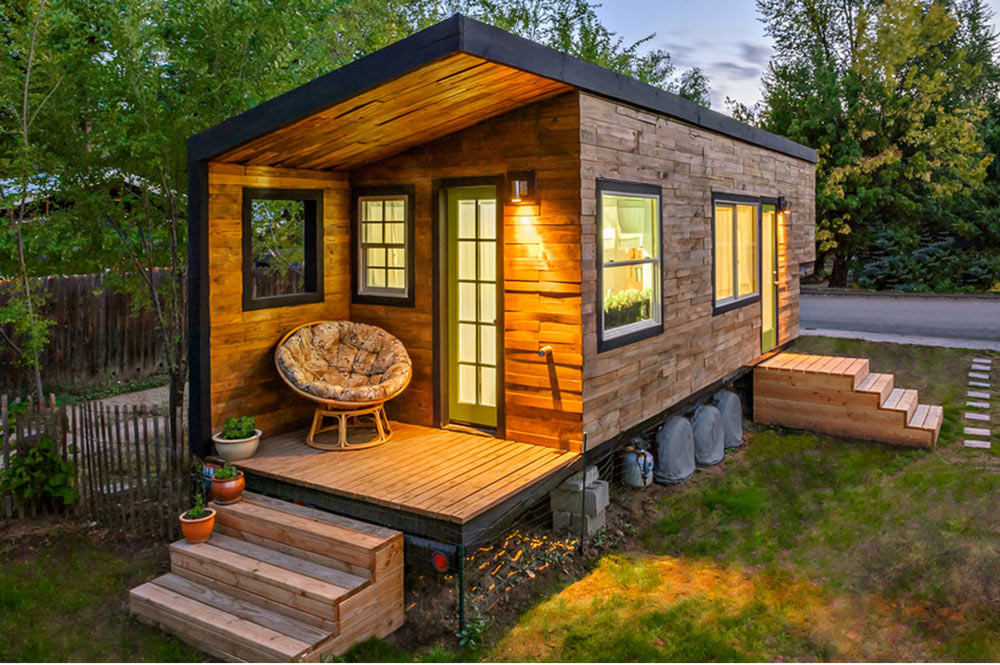
In 1997, Sarah Susanka published the first edition of The Not So Big House, starting what was going to become The Tiny House countermovement. With homes in the states growing from 1,780 square feet (165 m2) in 1978 to 2,479 square feet (230.3 m2) in 2007 – despite a decrease in the size of the average family – the need for an alternative was shared by many.
In 2005, after Hurricane Katrina, Marianne Cusato developed Katrina Cottages, starting at 308 square feet. Though these were created to provide a pleasant solution to a disaster zone, Cusato received wider interest in her design.
Two years later with the financial crisis taking place and the regulations for building a home constantly changing and increasing, the scene was perfectly set for the movement to gain traction.
It took more than a handful of years till it made it to the news, though by the time, many were already posting videos on YouTube, receiving millions of views.
The reasons it became so popular
I not so secretly have a big crush on tiny houses. Owning my home, within a reasonable point in time seems enough to get me all fired up. What started as bookmarking blogs and YouTube channels went on to drawing floor plans and calculating costs.
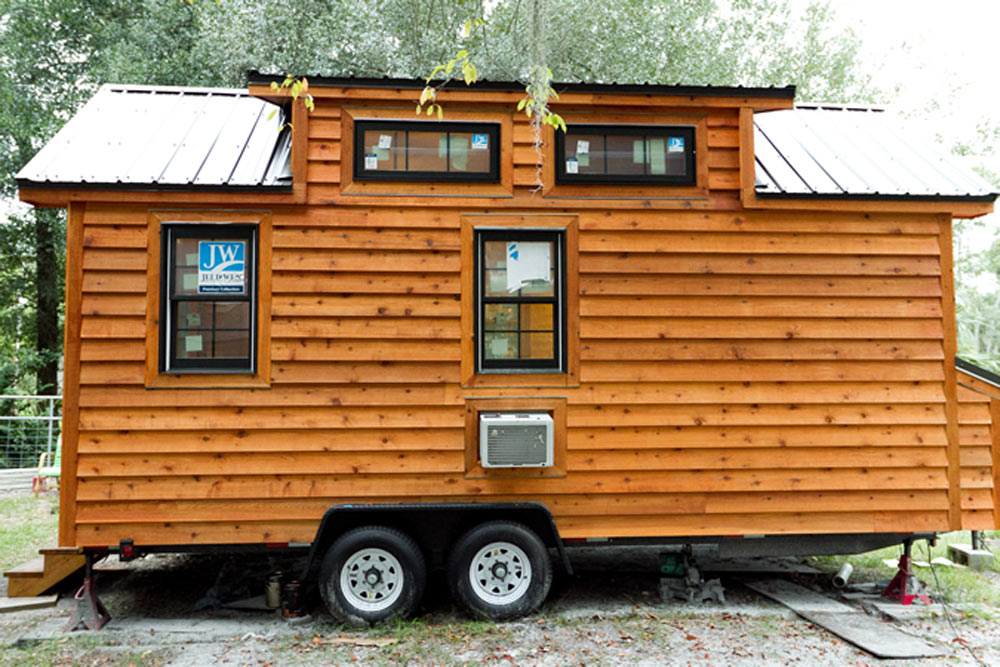
The DIY aspect appeals to me as well. The idea that you can get your hands dirty and have a home to show after a couple of months seems like a fair trade.
The frugal mindset flatters the part of us who is pragmatic. If you’ve adopted some of it throughout the years, chances are that such an idea sounds far less looney than it might to someone used to overconsumption and materialism.
In addition, tiny houses can be built on wheels, granting true mobility. While I’m not the type of guy interested in such a level of impermanence, many in fact are.
Nonetheless, lots of trends overlap with the idea of building small. And starting by sizing down, you might discover all kinds of hybrid home dimensions. The tiny house concept can merely be used as an idea when guiding you to a broader context. This too, proves valuable.
If you are the type of guy who keeps duck-tape solutions in his back pocket, or simply is at crossroads when it comes to housing, this article might be very worth scrolling.
Owning a tiny home
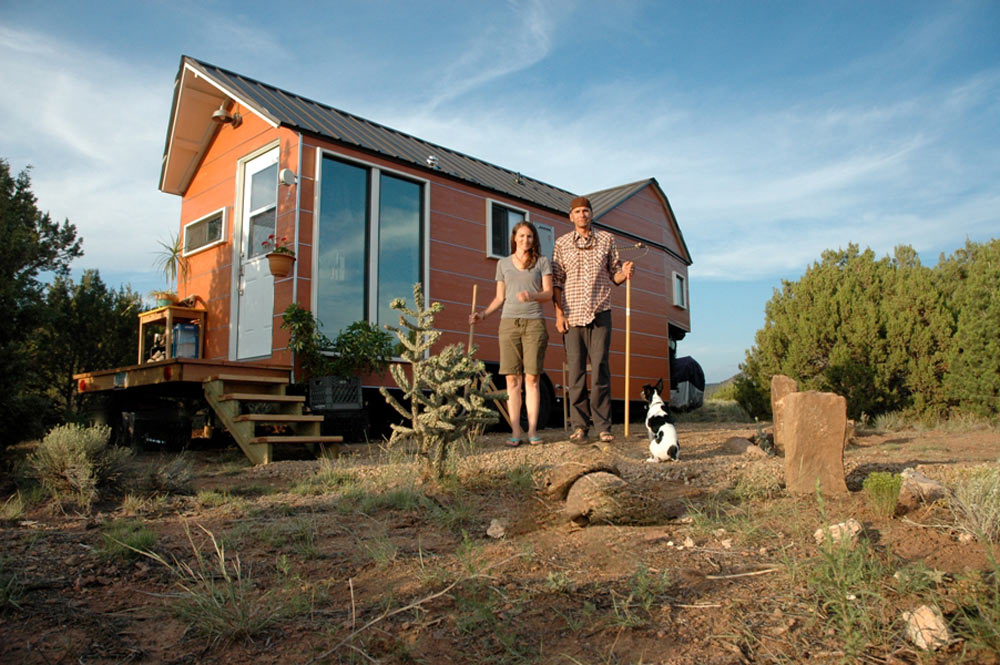
Explaining the concept to someone who puts the word master in front of a bedroom might prove to be a difficult task. But there is nothing wrong with it – this idea is not for everybody, and all of us have different requirements when it comes for comfort.
However, I’ve found that describing the tiny house movement, one should start in reverse – that is, look at the people who inhabit them first.
Why is this important?
Starting with the family structure, there is a difference in being single, having a partner, and raising kids. The stage of life also matters, so having a toddler is not the equivalent of having a teenager under your roof. These facts play one part of the equation.
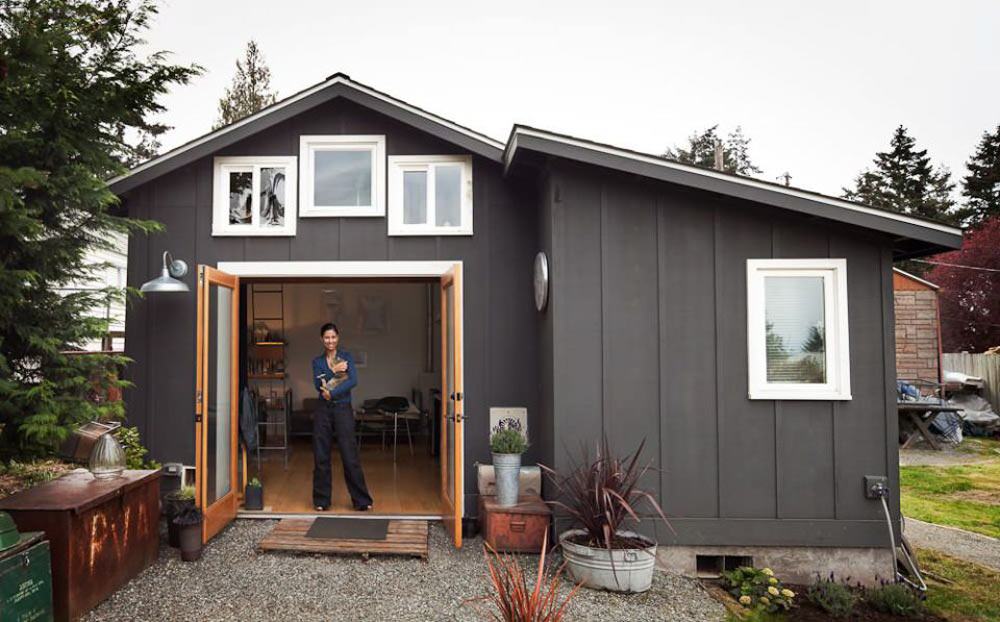
The other is your profession – many people today work freelance or run their own businesses thus having nothing more than a laptop as a professional luggage.
Then there is also the way in which you describe your lifestyle – how often you leave the house for example, and how long you are usually at home during the day.
In addition, if you are already moving towards a more minimal lifestyle – lowering the number of your possessions (one group of which being clothes for example) – then the idea of sizing down your space might seem reasonable enough.
Building a tiny house
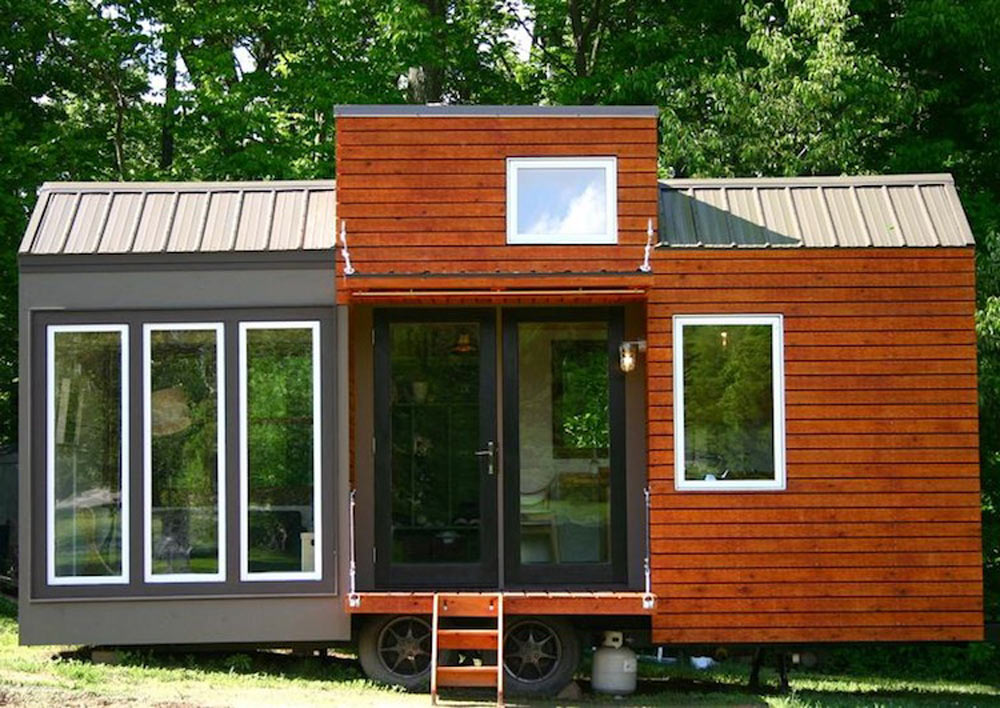
The cost, though significantly lower, can still vary by a great margin. This depends on the type of materials, and furthermore the design of your tiny home. Looking at pictures of tiny homes will give you a clue here – having a loft versus not having a loft; shed roof versus a Gable roof; having a dormer or not…
These can all significantly or less so impact the price tag attached to construction.
The isolation materials used have a way of raising the price tag as well, especially if you happen to live in somewhat of a harsher climate environment.
Adding to variety a mobile house might mean additional costs to put together. Instead of a fixed surface, it will require a trailer base, for example. Furthermore, there is the necessity of having your own systems of electricity, sewage, and water, all ready to be on the move; self-sustainability more or less.
Tiny houses construction has become a big deal – and businesses today, it seems, share this same sentiment. So it goes that you will easily find architects, engineers, carpenters and a palate of other tradesmen ready to jump in and take charge of construction.
Whole construction companies dedicated solely on building tiny houses were formed as well. There is hardly any statistical data on revenue and market share, but if I were to be the betting man there is no doubt in my mind that they are doing quite well.
One bedroom apartments across the states, statistic says, cost 967$ per month to rent. So it goes that a 20K home (the more or less usual starting point for tiny homes) to own for life makes sense from a financial point of view. Add mobility, and there is the best deal sweetener some can ask for.
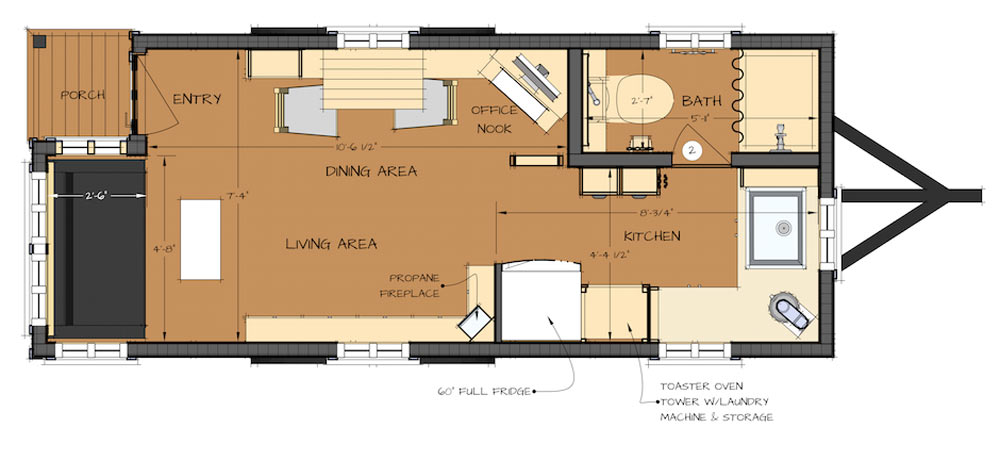
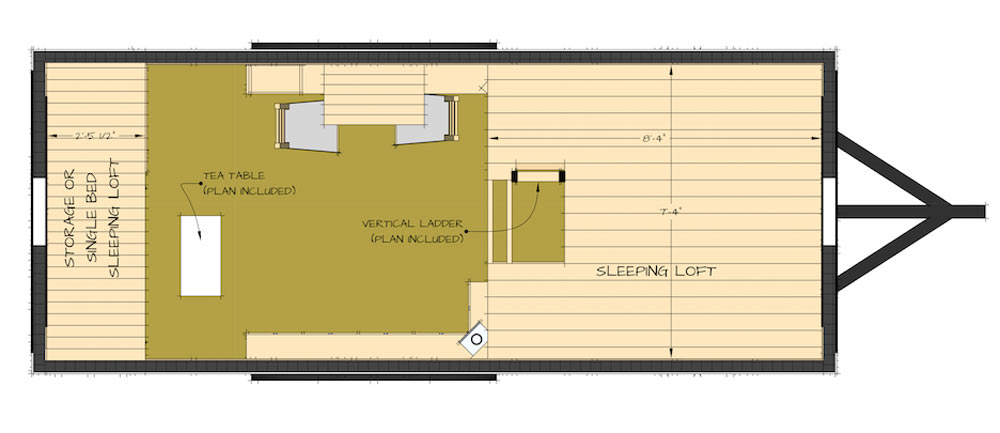
One can hardly discuss tiny houses without bringing up clean energy. The correlation between these, as my search marketing knowledge has led me to believe, is on the rise. In a way, it makes sense – if one is determined to make such a radical move (appealing to majority of readers here folks) when it comes to housing, logic goes that he will look up for other frugal investments as well.
Solar energy sees a more prominent advocate in tiny houses than in many other movements throughout the years (don’t forward this article to Elon Musk yet, he might get few ideas). People are ready to invest in clean energy sources, and become self-sufficient. Watching a couple of YouTube videos with tiny home owners, this trend becomes apparent. Tiny houses go hand in hand with clean energy, just so.
Just like a regular home
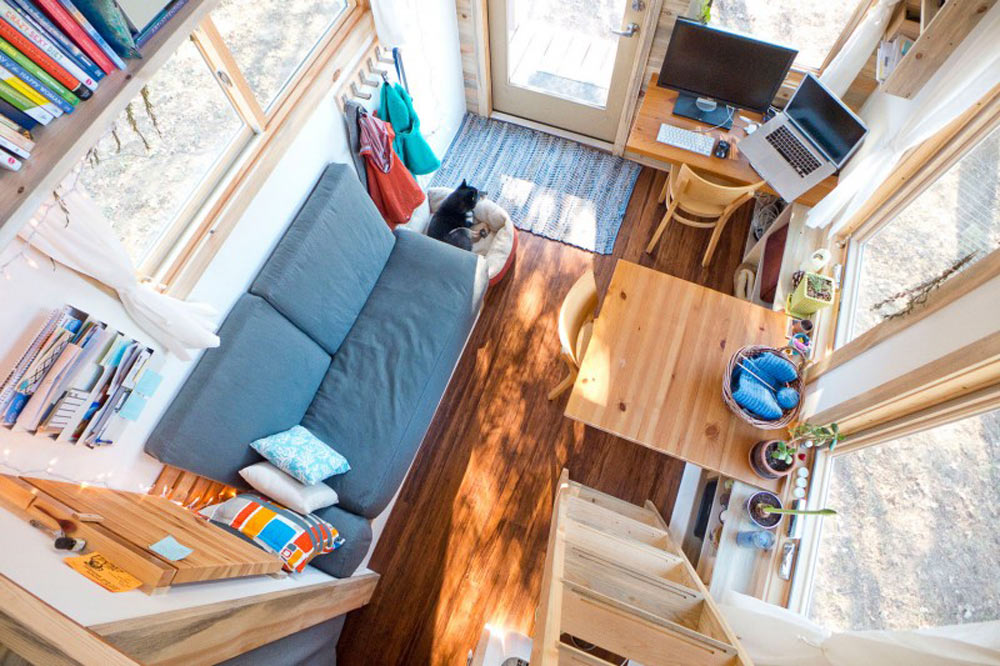
Hoping that the stigma attached to tiny houses wears off some by now, there is still the soft sell that I haven’t tried putting together.
Tiny homes, just like regular ones, can be designed in a way to meet all the required needs of those who inhabit them. They can be equipped with electricity, plumbing, have a higher ceiling, a kitchen, a bathroom, furniture and heating, just as you would expect from a regular size home. All shrank in size, still able to accommodate a family of two or three.
Aye, you won’t probably have a bathroom with a tub, or kitchen with a huge dining table in front, but it is still pragmatic as usual. You will go to work clean and tidy, and the outside world will never notice a difference. As for spending your time at home, there are so many design solutions, and interior design ideas on the net, that you will actually feel better in your tiny home that you would in a more spacious but otherwise not appropriately arranged living space.
There are many companies who offer design solutions but also top-to-bottom build and ready houses. If you are not the DIY type of guy, experienced tradesmen are more than ready to take it up from whatever idea you might have.
The Tumbleweed Tiny House Company offers a myriad of building solutions and design ideas. They also have catalogue listed types of houses, ready to order.
Nelson Tiny Houses is a locally-owned, sustainably-produced company that builds superior tiny houses in a part of southern British Columbia. They too, same as Tumbleweed, are open to all sorts of collaboration.
The movement is on the rise
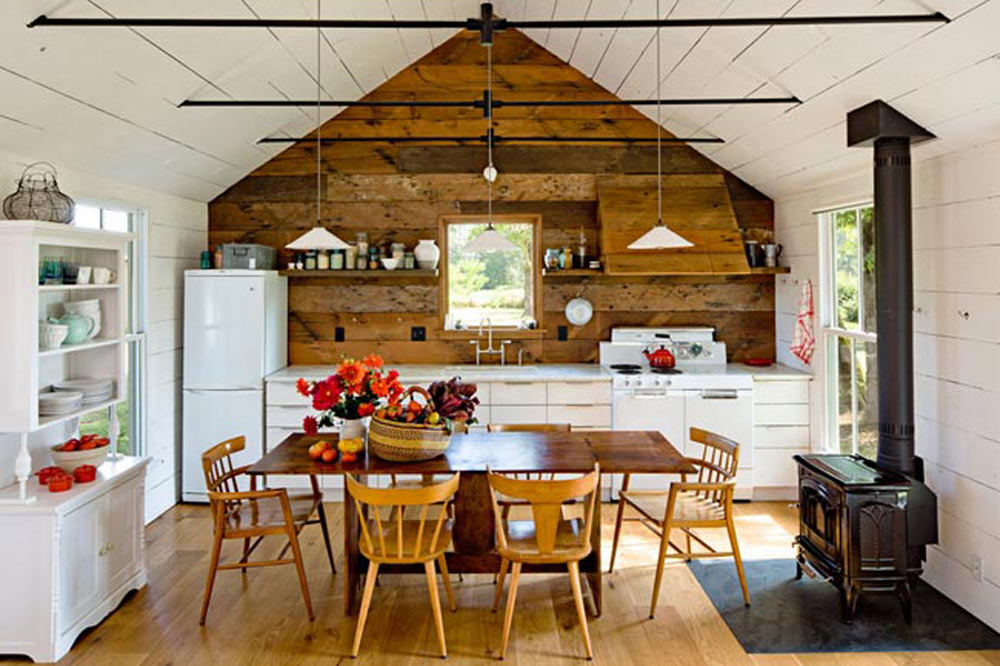
If I were a carpenter, this trend would surely give me a number of sleepless nights. This is, by and large, the best timing to jump into business – tiny homes are now more popular than ever.
Fox News did a segment, a year ago, trying to highlight a trend already discussed to infinite lengths by internet media. Blogs, YouTube channels, Pinterest entries in the millions… The fact that TV takes up the story, means that this is not some seasonal thing.
Small and tiny houses have received increasing media coverage including a television show, Tiny House Nation, in 2014 and Tiny House Hunters. Both have decent audience numbers.
The city-turned-countryside families spread the movement far and wide, too. People, it seems, are fascinated with stories about couples who decided to size down on housing. Many even document their journeys on blogs or short documentary segments. The views are ridiculous.
Kirsten Dirksen, a video producer, documents a number of interesting stories each month, delving deeper into everything frugal living related – from how tiny houses are built, what is the idea behind the design, to furniture solutions, transition to a small space, personal and family stories. And while necessity seems to be somewhere along the line of reasons why people decide to live in a small space, it is more of a personal choice and overall change in lifestyle.
Her YouTube channel has more than 260 thousand subscribers, making her videos viewed by more than 117 million sets of eyeballs.
And while Kirsten follows stories and examples of simple living, there is a couple by the name of Jenna and Guillaume who travel North America in their self-built Tumbleweed tiny house, interviewing other tiny home residents. With around 17 thousand subscribers on YouTube, and a different house to show almost each week, their community – Tiny House Giant Journey– is one that is on the rise.
Same goes for another very passionate team of professionals – Living Big in a Tiny House – who with over 71 thousand subscribers on their channel and excellent production, show examples of beautiful tiny homes, and a palate of DIY projects and tips. Some of the people they interviewed place YouTube as the number one go-to place for learning how to put your first tiny house together. For those asking, though not the simplest, it is still a very straight-forward task.
Blueprints, hybrid solutions, getting ready to size down
Macy Miller went to great lengths to make her tiny house energy efficient and green. An architectural student, she had always wanted a place of her own but was not interested in the residual costs of a traditional home and mortgage.
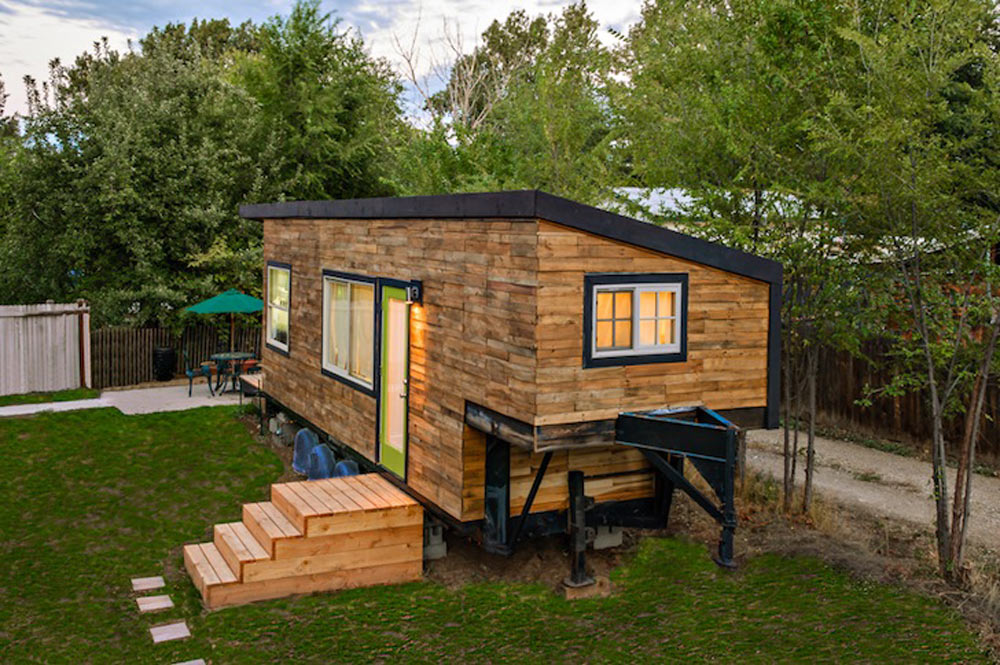
The total interior size of the house is 232 sq. ft. which she says is “too much room”. She has tracked the overall project cost right down to the penny, spending $11,416.16 by the time the tiny house was completed. This too, I take as reassurance.
And while not many people are interested in lifting up the hammer, or choosing their lumber, programs like Google sketch allow us to at least fancy the idea by giving a try at drawing floor plans.
Macy’s design, along with many others, might inspire your creative spark if you just take a try and picture your ideal tiny home. And it doesn’t have to be a home. Neither does it have to be particularly tiny.
Being at some crossroads in my life, between fancying the idea of marriage, starting a family and choosing a place to settle down, looking at tiny houses does indeed open some horizons ahead.
Tiny homes, as much as they appeal to me, don’t really pass as an idea by my girlfriend. Fair enough, I thought, and went sketching solutions that are somewhere in between – keeping to the idea of owning a regular size home, but trying to wed with it the idea of using space to its maximum.
And this is the direction I want you to encourage you to think ahead – while tiny homes aren’t for everybody, some principles can still be applied when drafting an average size home as well. Sizing down doesn’t have to go all the way.
The sketches bellow are made in Paint (I know, right? What a geezer) and show a 300 sq. ft. of a living space. An idea that crossed my mind in 2AM, after watching a dozen of tiny house pictures and videos (courtesy to the guys mentioned above).
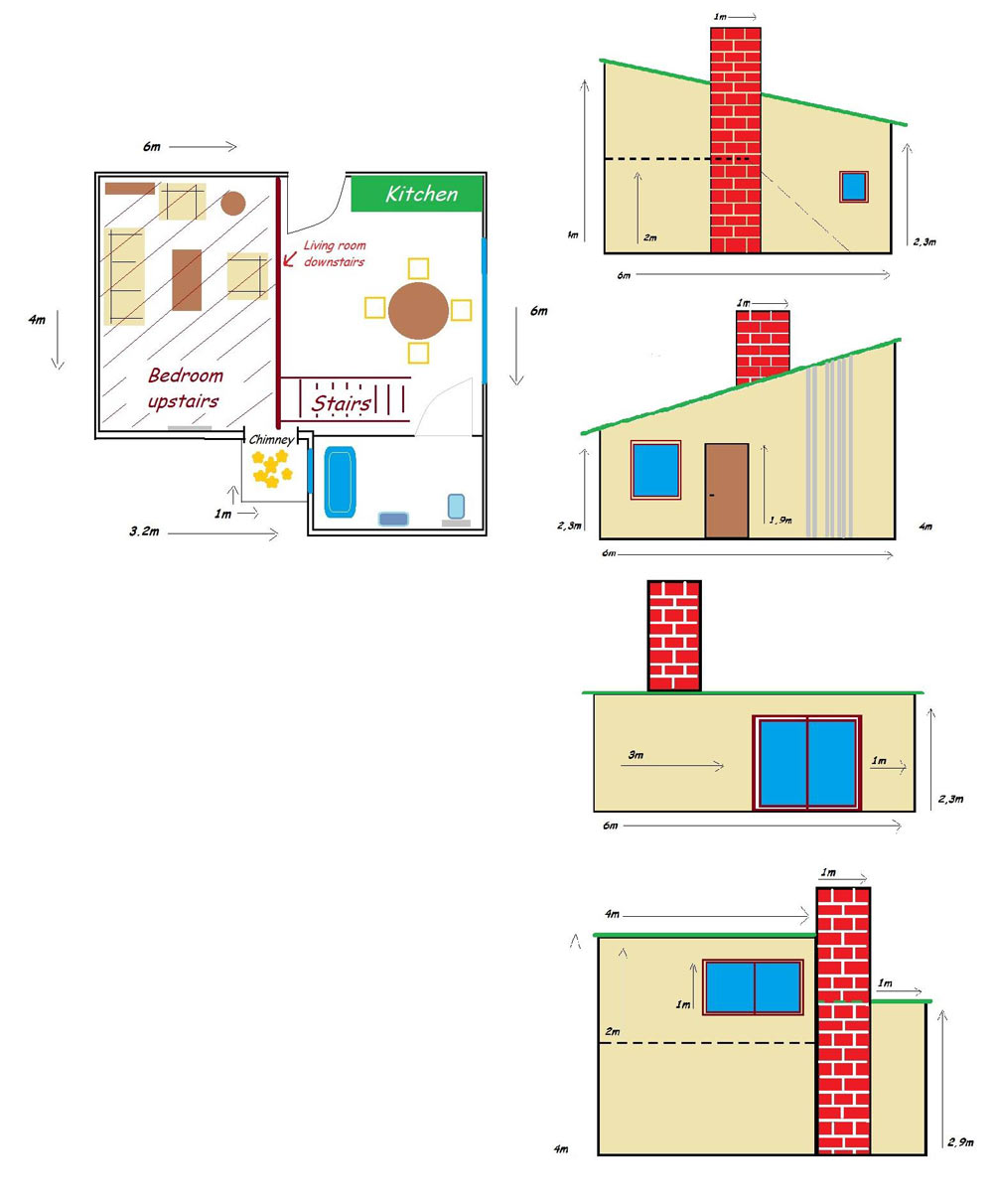
Here is another more comfortable setting that is slightly above 500 sq. ft. Learning about all the ways a roof can be made, this example has a flat one, ready to sometimes be built upon. Not a thing in common with tiny homes, I hear you saying, but pragmatic transition for someone who is thinking about raising kids few years down the road I guess.
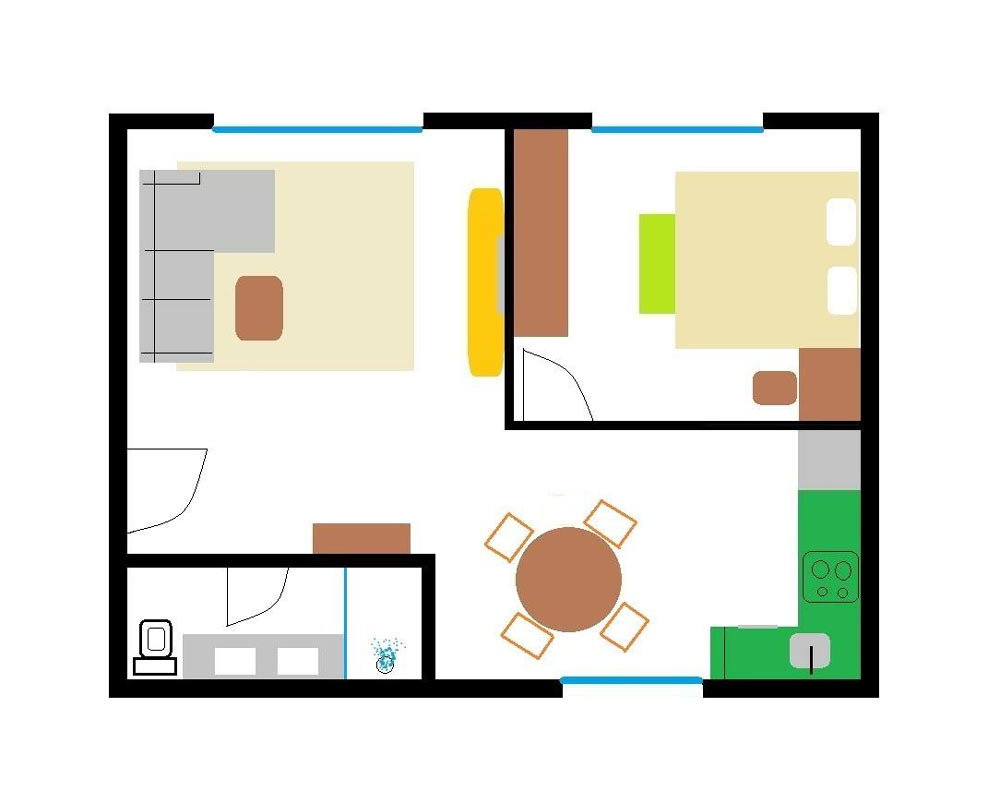
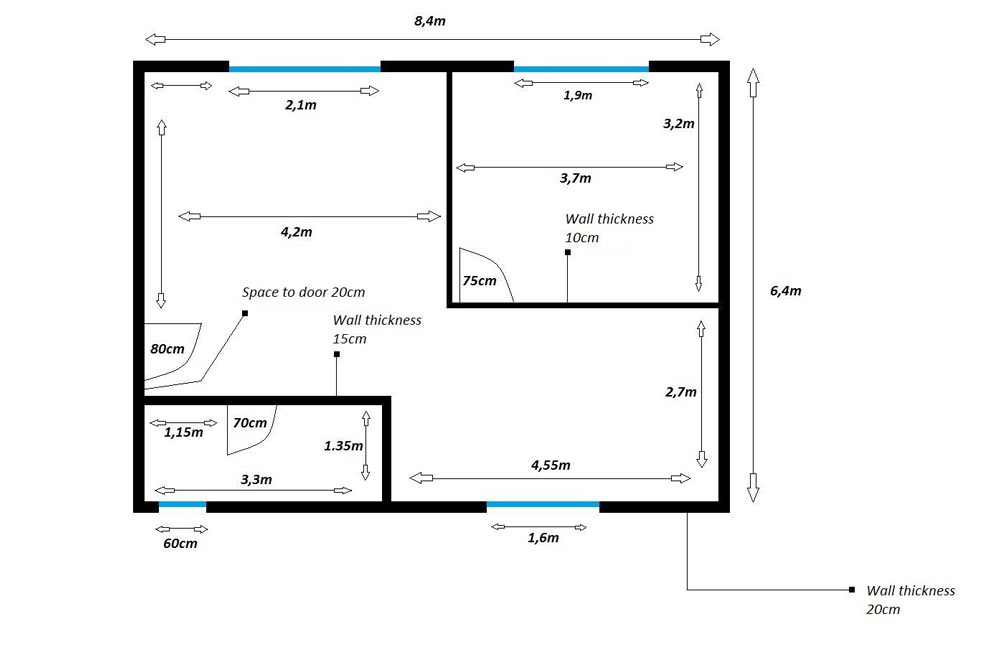
The thing I want you to take away from this article I suppose is the idea that tiny spaces are not necessarily less comfortable. They can, in fact, inspire with design solutions that will in turn increase comfort and aesthetics, while at the same time being utterly pragmatic. All this, while burning a substantially smaller hole in your pockets.
The ideas, really, go as far as your imagination can stretch.
I’ve talked with a bunch of guys in Idaho, looking forward to start a business by renting tiny houses. Popularity, they figured, being on the rise, made people really curious about what it’s like to stay in a small space for a couple of days. Add lower investment and beautiful scenery that can attract visitors and you have a hell of a business model. Internet marketers can also take advantage of this trend, by promoting DIY books and blueprints, interviewing owners, making websites that are niche specific. But that’s a whole ‘nother subject.
Tiny homes, especially those on wheels, can serve as a means to escape the city for a while and head off to vacation with your family. Replacing the usual concept of an RV, this was an option hardly explored until now.
There are also many cheap lots of land to buy around, where such a house can be built and installed. Living outside the states makes this easier for me, since buying land can be a bargain where I life; building materials too – a reason more to see this tiny house movement spread across the world in recent years. Again entrepreneurs, take notes.
Living in a tiny house
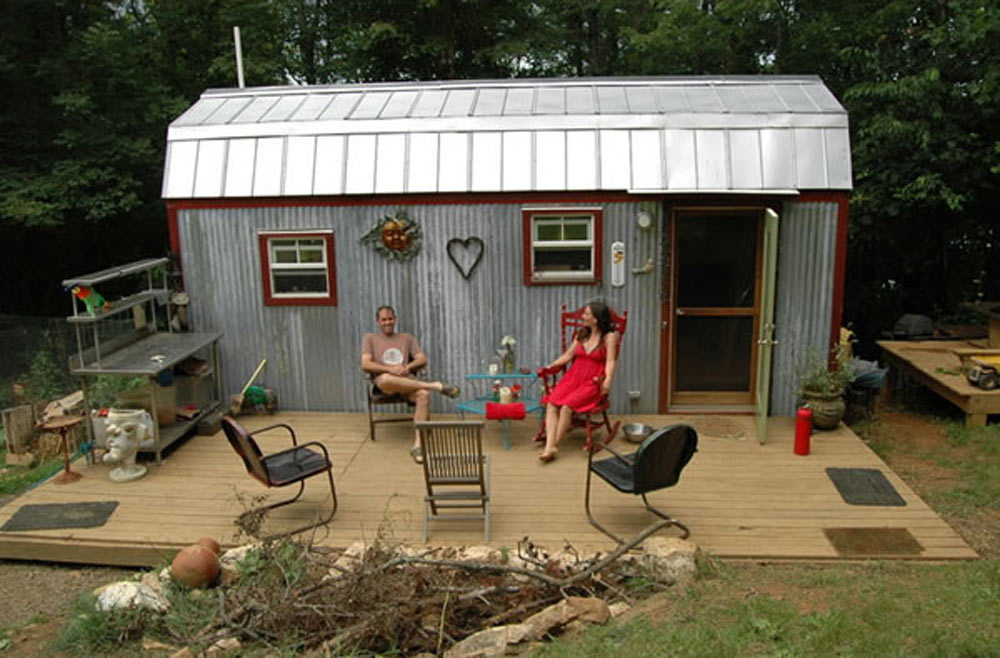
So far, I’ve been describing the idea from a slightly detached angle. Not a word was written about real life stories, families that already spend their everyday in tiny homes.
For, you see, after the construction and all the financial logic settles down, then comes the day in and day out in your new tiny home. And here is where the story usually starts for many, and where things matter the most.
At the peak of his career, professional snowboarder Mike Basich was clocking $170,000 a year, enough to get himself into a 4,000-square-foot house he ultimately discovered he didn’t need. Retired from competition, Basich spent five years building himself an off-grid stone and wood cabin that is less than 250 square feet, located on a 40-acre plot of land he purchased in the Sierra Nevada Mountains.
He still loves to snowboard and uses camera drones to record himself while snowboarding. One of the best features of the cabin is that it has a hot tub and a ski lift. The rest he keeps simple, straight to the point, and in line with his passion.
But Mike, as you might guess, is not your average tiny house resident. Though his is an interesting story, there are still very few angles most people can relate to.
Andrew Morison and his wife Gabriella live in a tiny house they’ve built together, located on their 5 acre property. Stripping down possessions and abandoning the lifestyle they previously had- they are now finally able to work from home full time, live totally off-grid and be completely debt free.
Andrew has been a professional builder for 20 years and has been teaching people how to build their own homes since 2004. In that time he has personally taught over 1,400 participants how to hand craft their own homes and has seen again and again that anyone with passion and perseverance can build theirs too.
With the extra time and money that they now have, they travel and enjoy time together as a family. According to both, live is simpler, and they are more content after reassessing what home really means.
Living in a tiny space is realistic even for young families. Faced with the financial barrier of entry that a marriage and bringing a child to this world usually raise, tiny homes are probably the best solution. Temporary for some, transitional, or maybe even more permanent for others.
A New Zealand couple, Shaye and Tom, decided to design and build their own tiny house in West Auckland. It measures 7.2 meters long by 2.4 meters wide. Or a total of 15 square meters (161 square feet).
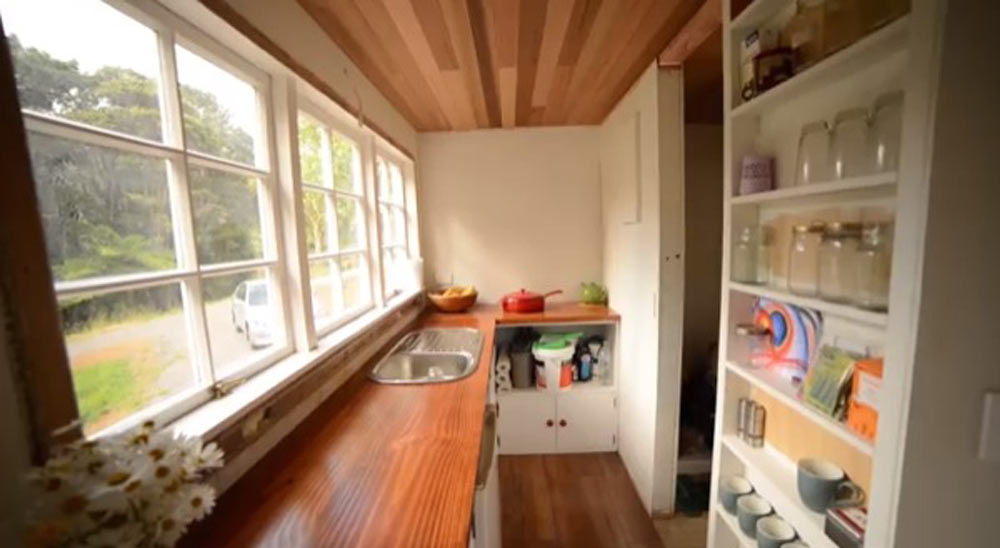
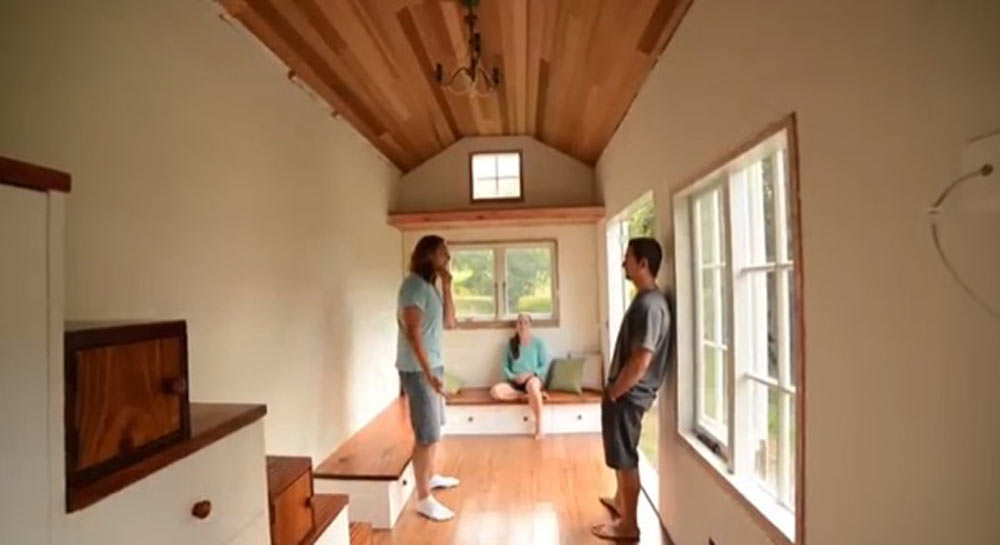
They are enjoying life in their tiny home, and are especially amazed by how the space is accepting change.
“One of the most wonderful things has been seeing our home evolve to suit our changing needs and the addition of our precious baby, Hazel. We’re amazed at how well our tiny house works for us as a family of 3.”
“…We’ve found that with clever design, living in a tiny house – even living as a family in a tiny house – can be very comfortable.”
And tough these families made it work for themselves, there are many others who struggle to confine their day to day experience into such a small space. I for one cannot entirely decide on how to continue with my home fitness subscription with Beachbody on Demand in case I decide to space down on housing. But there are ways around many such things I’m sure.
I hope this article gave you enough insight into this fast growing trend, and inspired you to think slightly different when it comes to housing and lifestyle. As I’ve already wrote above, the idea here is to be open to possibilities – think pragmatic, and affordable.
The implication of this concept can be way broader than trying to create the perfect replica of the homes I’ve included.
The takeaways I would encourage you to consider are getting your hands dirty, and learning a thing or two about all the options available out there. Investing, if nothing more, an hour or two scouting for the perfect design on YouTube.
Tiny houses can inspire you to live minimal, to embrace the mobile lifestyle, or simply invite pragmatic thinking when drafting your new family home. They can also serve as a cabin in the woods, or something you can maybe even built a business model upon.
Special action call goes for young couples and newly formed families on the one side, and contractors and businesses on the other. This trend is moving faster than a speeding train, becoming a global business. And brother, business is a-boomin’!